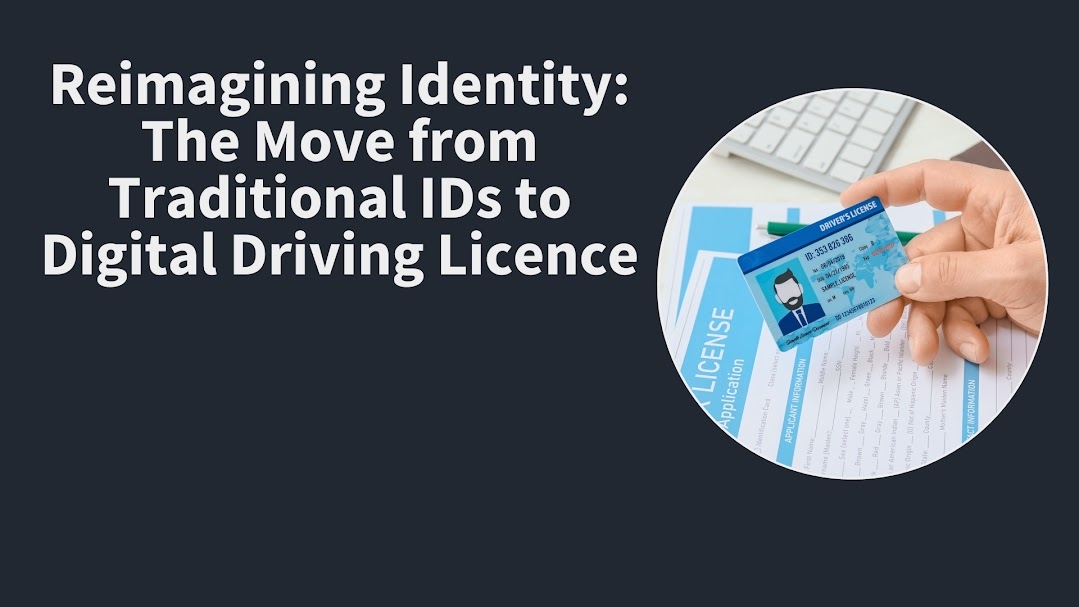In an era defined by rapid digital transformation, traditional paper-based documents are gradually being replaced by their digital counterparts. One such revolutionary shift is the introduction of the Driving Licence (DL), a modern and secure way of storing and accessing driving credentials. With the increasing adoption of digital identity solutions, governments worldwide are transitioning towards paperless documentation to enhance convenience, security, and efficiency. This article explores the future of driving credentials, emphasizing the advantages, technological framework, implementation challenges, and global adoption of digital driving licences.
What is a Digital Driving Licence?
A Digital Driving Licence (DDL) is an electronic version of a physical driving licence stored on a mobile device, such as a smartphone or tablet. It functions as a legally recognized digital identity proof for driving and can be used in various scenarios, such as traffic checks, identity verification, and online transactions related to vehicle services.
Unlike traditional driving licences, which are vulnerable to damage, theft, or loss, a digital driving licence is securely stored within a government-authorized application, ensuring authenticity and easy accessibility. Many countries are already rolling out mobile driver's licences (mDLs), which offer enhanced security features, such as encryption and biometric authentication.
The Technological Framework Behind Digital Driving Licences
The digitalization of driving licences is made possible through advanced technologies, including:
-
Blockchain Technology: Ensures data integrity and prevents unauthorized alterations.
-
Biometric Authentication: Uses fingerprint or facial recognition for secure access.
-
QR Codes and NFC (Near Field Communication): Enable instant verification by authorities.
-
Cloud Storage and Encryption: Protects personal data from breaches and cyber threats.
-
Mobile Applications: Provide users with an intuitive interface to access their driving credentials anytime, anywhere.
These technologies collectively enhance the security, reliability, and convenience of digital driving licences, making them a viable alternative to traditional physical documents.
Advantages of Digital Driving Licences
1. Enhanced Security
DDL systems incorporate multi-layered security measures, such as encryption, biometric authentication, and real-time verification, reducing the risk of fraud, identity theft, and counterfeiting.
2. Greater Convenience
A digital driving licence eliminates the need to carry a physical card. Users can access their credentials via their smartphones, reducing the chances of misplacing their licence.
3. Eco-Friendly Solution
By eliminating the need for plastic cards and paper-based documents, digital driving licences contribute to environmental sustainability and reduce waste.
4. Instant Updates
Unlike physical licences, which require manual renewal or updates, digital licences can be updated in real time. Any changes, such as address modifications or licence renewals, can be reflected instantly.
5. Easy Verification and Accessibility
DDL can be verified instantly by law enforcement agencies and other authorities using QR codes or NFC technology, eliminating the need for extensive paperwork and reducing administrative burdens.
6. Integration with Other Services
A digital driving licence can be seamlessly integrated with other digital services, such as car rentals, insurance verification, toll payments, and vehicle registration, creating a unified digital ecosystem.
Future Prospects of Digital Driving Licences
The future of driving credentials is undoubtedly digital. With rapid technological advancements, the scope of digital driving licences will expand beyond identity verification. Some potential developments include:
-
AI-Powered Smart Licences
-
AI-driven features can assess driver behaviour, monitor road safety compliance, and provide personalized driving recommendations.
-
-
Integration with Smart Vehicles
-
Digital licences can be linked to smart car systems, enabling seamless identity verification for automated vehicles and ride-sharing services.
-
-
Global Standardization and Interoperability
-
Efforts towards a unified digital identity system will facilitate cross-border verification and international acceptance of digital driving licences.
-
-
Contactless and Voice-Activated Access
-
Advanced biometric solutions may enable voice-activated or retina-based authentication for enhanced security.
-
-
Decentralized Identity Management
-
Blockchain-based digital identity solutions may empower individuals to control their data, reducing reliance on centralized government databases.
-
Suggested read:- How to Check Driving Licence Status in India?
Conclusion
The Digital Driving Licence (DDL) represents the next phase of digital transformation in driving credentials. As governments and organizations continue to embrace digital identity solutions, the shift from physical to digital licences offers numerous benefits, including enhanced security, greater convenience, and environmental sustainability. However, challenges such as cybersecurity risks, accessibility issues, and legal considerations must be addressed to ensure a seamless transition.
With continuous technological advancements and widespread adoption, digital driving licences are poised to become the future standard for driving credentials, paving the way for a smarter and more connected digital world.






